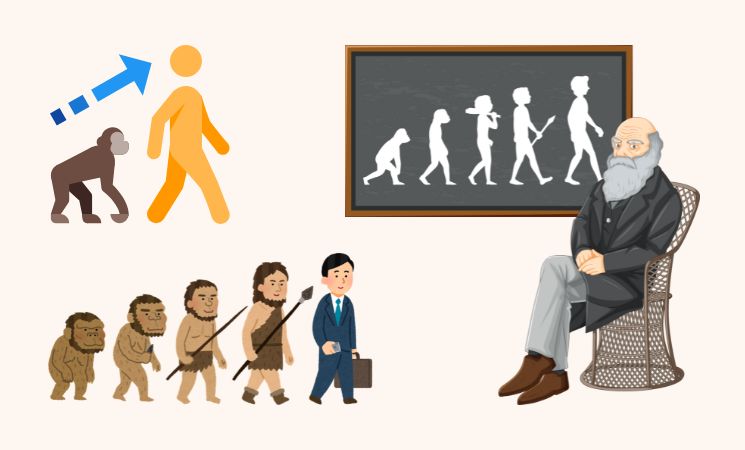Ever sat at a zoo, watching monkeys swing and thought, “How much are we really like them?” The similarities between humans and rhesus macaques (Macaca mulatta) are surprising. But there are also differences that remind us just how unique we are.
Among the many species of monkeys, rhesus macaques (Macaca mulatta) stand out. Known for their intelligence and adaptability, they share surprising similarities with humans.
Let’s explore into what makes us alike, where we differ, and how we both see the world in color.
Humans and Rhesus Macaques: More Alike Than You’d Think
If monkeys have ever reminded you of humans, there’s a good reason. The Rhesus Macaque Genome Project published in Science in 2007 revealed that rhesus macaques share about 93% of their DNA with humans. 1 It’s like looking at a distant relative. But the similarities go beyond just genes.
Both humans and rhesus macaques are social beings. Troops of macaques can include up to 80 individuals, each following a clear hierarchy. In these groups, dominance dictates access to food and resting spots – something not too different from the social structures we see in human workplaces.
Did you know that macaques frown, pout, and even smile? Rhesus macaques are expressive animals. They frown, pout, and even smile, using facial expressions to convey emotions like anger or affection. When a macaque glares at you, it’s not random—it’s their way of saying, “Back off!”
Their intelligence is equally impressive. Rhesus macaques can solve puzzles, remember patterns, and even recognize themselves in mirrors. They’ve been spotted washing food and learning by watching others, a sign of intelligence once thought to be uniquely human. 2 3 4 5
Differences That Make Us Unique
While the similarities are striking, the differences remind us why humans build cities and rhesus macaques stick to the trees.
Humans use over 7,000 languages. Meanwhile, macaques stick to a handful of vocalizations, like grunts, squeals, and shrieks. Think of it as their version of text shorthand. The human brain is about three times larger, and it shows. While macaques are smart, they don’t write novels or build rockets.
Their problem-solving is instinctual, not abstract. Humans create art, music, and technology. While macaques occasionally use sticks as tools, they don’t create Spotify playlists or smartphones (though some steal them!).
Do Humans and Rhesus Macaques See Colors the Same Way?
You and a rhesus macaque might look at a rainbow and see it slightly differently. Here’s why:
Both species rely on three types of cone cells in their eyes to perceive colors. That means macaques see red, green, and blue hues just like us. 6
Humans might spot more subtle differences in reds and greens. For example, you’d notice cherry red vs. crimson, while a macaque might not. 7
Macaques, like humans, can experience optical illusions! In studies, they’ve been tricked by visual puzzles, showing their brains process images in similar ways. 8
Cool Facts About Rhesus Macaques
- Rhesus macaques are found all over Asia, from India’s bustling cities to remote Himalayan forests. Some even thrive in urban jungles, stealing food and interacting with tourists.
- In 1949, Albert II, a rhesus macaque, became the first primate in space, paving the way for human space exploration.
- Grooming isn’t just about hygiene – it’s how macaques bond. The closer the bond, the more grooming they share.
Why Compare Humans to Rhesus Macaques?
Studying rhesus macaques helps scientists unlock mysteries about human evolution, behavior, and even diseases. For example, their immune system similarities have contributed to vaccine development.
But beyond science, macaques remind us that intelligence, emotions, and social bonds aren’t just human traits – they’re part of a much bigger picture.
Humans and rhesus macaques share surprising similarities, from emotional expressions to complex social lives. Yet, the differences – like advanced language and culture – highlight what makes us uniquely human. By studying macaques, we gain insights into our own evolution and place in the natural world.
Resources:
- Rhesus Macaque Genome Sequencing and Analysis Consortium (2007). “Evolutionary and Biomedical Insights from the Rhesus Macaque Genome.” Science, 316(5822), 222–234. DOI: 10.1126/science.1139247 ↩︎
- Washburn, D. A., & Rumbaugh, D. M. (1992). “Testing primates’ problem-solving abilities.” PNAS. ↩︎
- Chang, L., Zhang, S., & Poo, M.-M. (2017). “Neural correlates of mirror self-recognition in monkeys.” Science Advances, 3(10), e1600558. ↩︎
- Kawai, M. (1965). “Newly-acquired pre-cultural behavior of the natural troop of Japanese monkeys on Koshima Islet.” Primates. ↩︎
- Whiten, A., & Ham, R. (1992). “On the nature and evolution of imitation in the animal kingdom: Reappraisal of a century of research.” Advances in the Study of Behavior, 21, 239-283. ↩︎
- Jacobs, G. H. (2008). “Primate color vision: A comparative perspective.” Visual Neuroscience, 25(5–6), 619–633. DOI: 10.1017/S0952523808080760 ↩︎
- De Valois, R. L., Abramov, I., & Jacobs, G. H. (1966). “Analysis of response patterns of LGN cells in rhesus monkey.” Journal of the Optical Society of America, 56(9), 1291–1303. DOI: 10.1364/JOSA.56.001291 ↩︎
- Fujita, K. (1997). “Perception of the Ebbinghaus illusion in Japanese monkeys (Macaca fuscata), chimpanzees (Pan troglodytes), and humans (Homo sapiens).” Perception & Psychophysics, 59(2), 284–292. DOI: 10.3758/BF03211892 ↩︎













